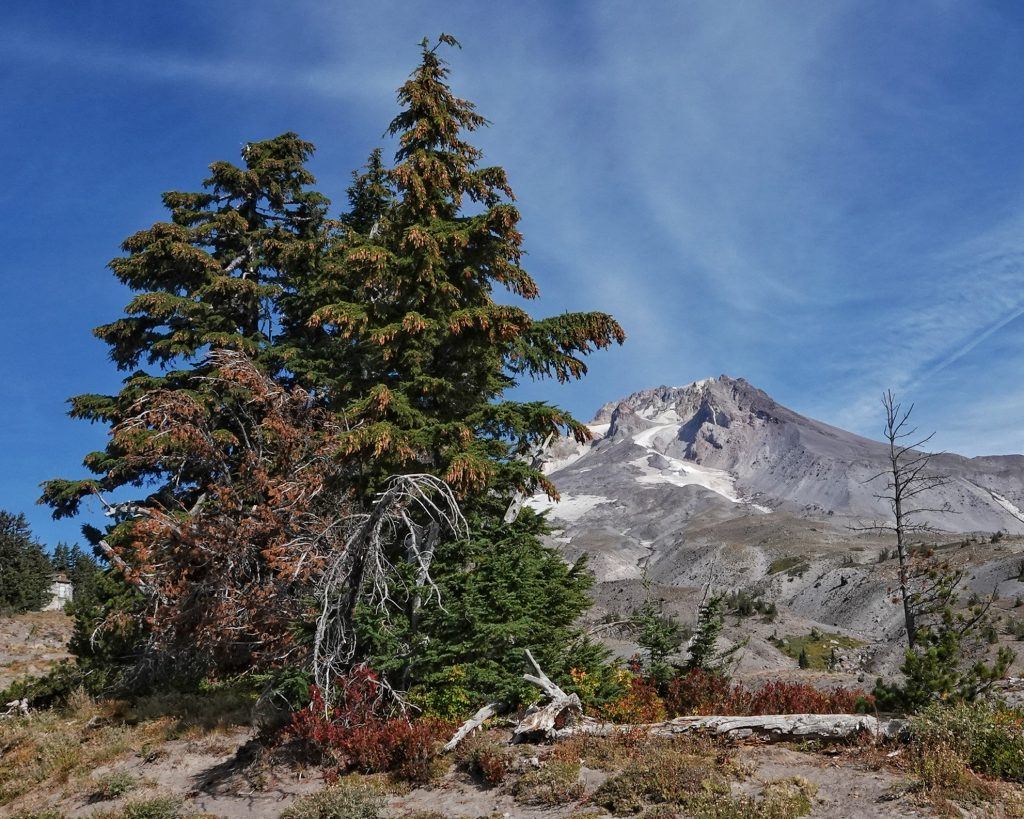
I recently made a trip up to the Timberline Lodge area of Mt. Hood, and one of my primary objectives in doing so was to reach an elevation where the Tsuga would all be mertensiana, with the hope that at least some of them would have cones, since all of the Mountain Hemlocks I had found (scattered among Western Hemlocks at elevations between 3-4,000’) had been coneless. And I was successful far beyond what I’d hoped for. It turns out that Mountain Hemlocks are the dominant species on the south slope of Mt Hood near timberline, with many, many trees bearing cones, and I saw enough variation in the species to feel like I have a real handle on identifying them now.
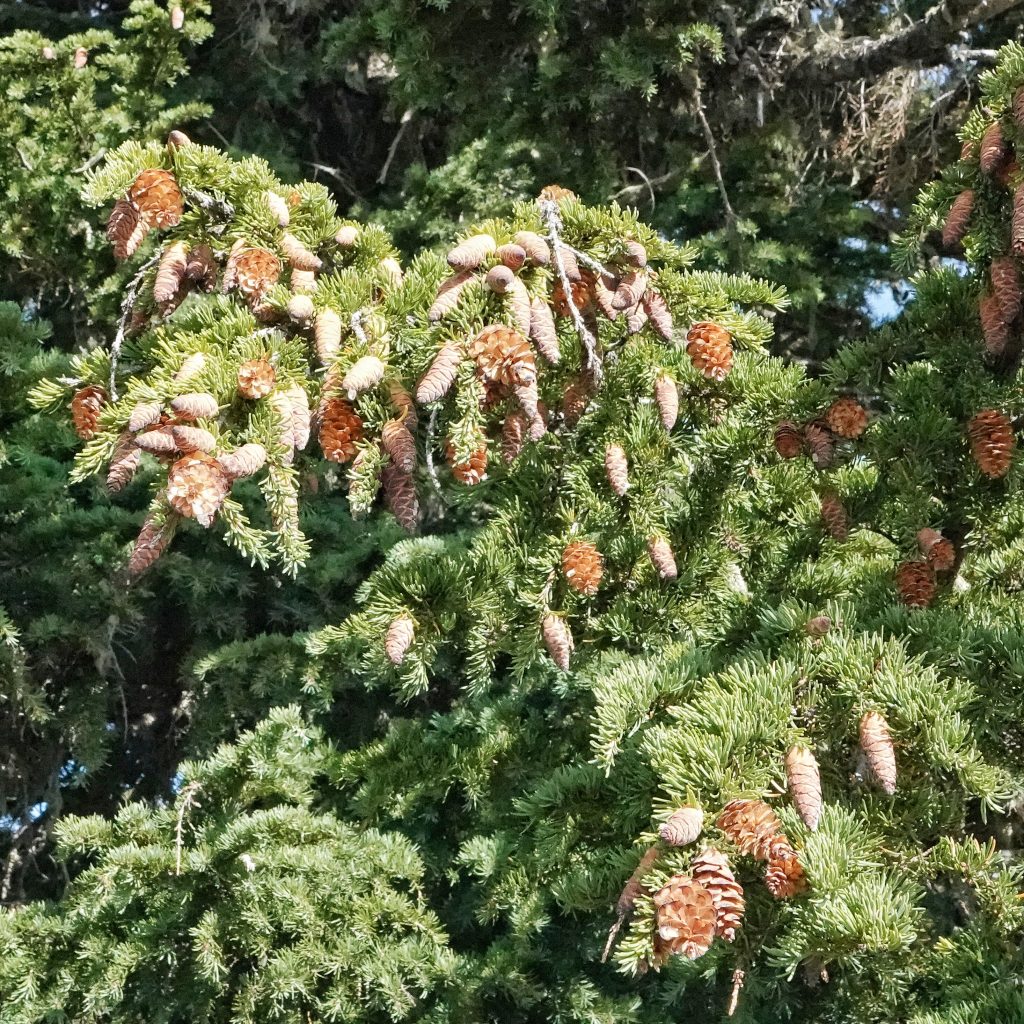
One of the main things I’ve noticed while exploring the conifers is that the needles of Tsuga spp. are significantly shorter than those of other trees. The difference between the 3/4” needles of Tsuga spp. and the 1” needles of Doug-fir (which are also narrower in proportion) may not seem like much on paper, but it’s quite obvious in nature with a tree full of them. It makes the hemlock branches look bristly. Mountain Hemlock needles also tend to be more bluish green (glaucous) than those of either Doug-fir or Western Hemlock, and they are all one length and arrayed around the stem, whereas Western Hemlock needles are two different lengths and are not often found on the bottom of the stem.
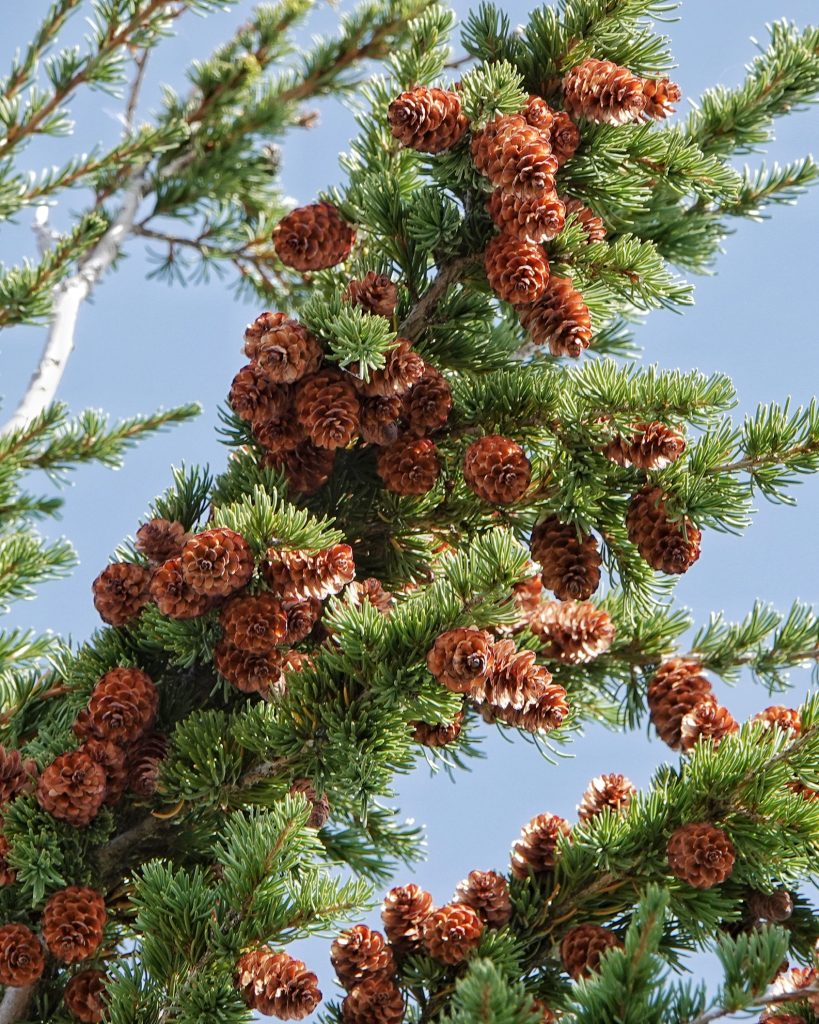
Cones, when you can find them, are another identifying characteristic. Those of Mountain Hemlock are 35-75mm long, while Western Hemlock cones are 17-35mm long, and hemlock cones lack visible bracts on their scales, while Doug-fir have obvious trident shaped bracts. Another identifiable trait of Mountain Hemlocks is that they have short side branches with whorls of needles, a characteristic that is lacking in Western Hemlock and Doug-fir. Both hemlocks also often (though not always) have a ‘droopy leader’ (the leader is the topmost, usually vertical, part of the central trunk), a handy identification tool when surveying stands from a distance. But it can’t always be counted on, because I have now seen a few (but, admittedly, not many) Douglas-fir with canted to horizontal leaders, and a fair number of hemlocks with vertical leaders. Yet another example of why it’s often helpful to know multiple identification characteristics.
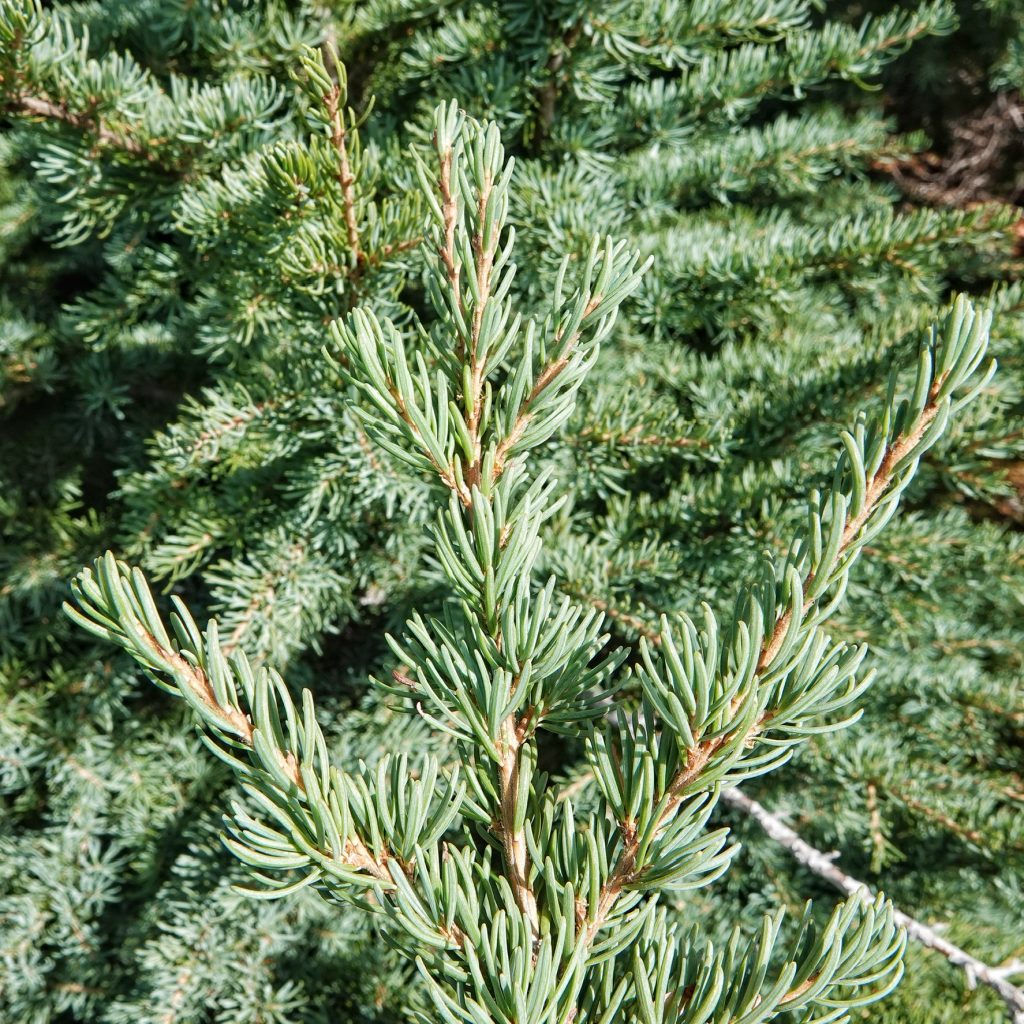
Like many other subalpine conifers it will sometimes form ‘timber atolls’, where there will be an isolated clump of 1 or 2 large trees, closely surrounded by younger, smaller trees. This appears to be the result of snow melting sooner around the original tree (because of ‘black body radiation’) once it projects above the winter snowpack, thus giving a headstart to trees which germinated alongside the original. These trees are highly shade tolerant, but are very slow to regenerate after fires. The relatively thick bark provides some protection from fires, but it’s low hanging foliage and tendency to clump tend to outweigh that benefit.
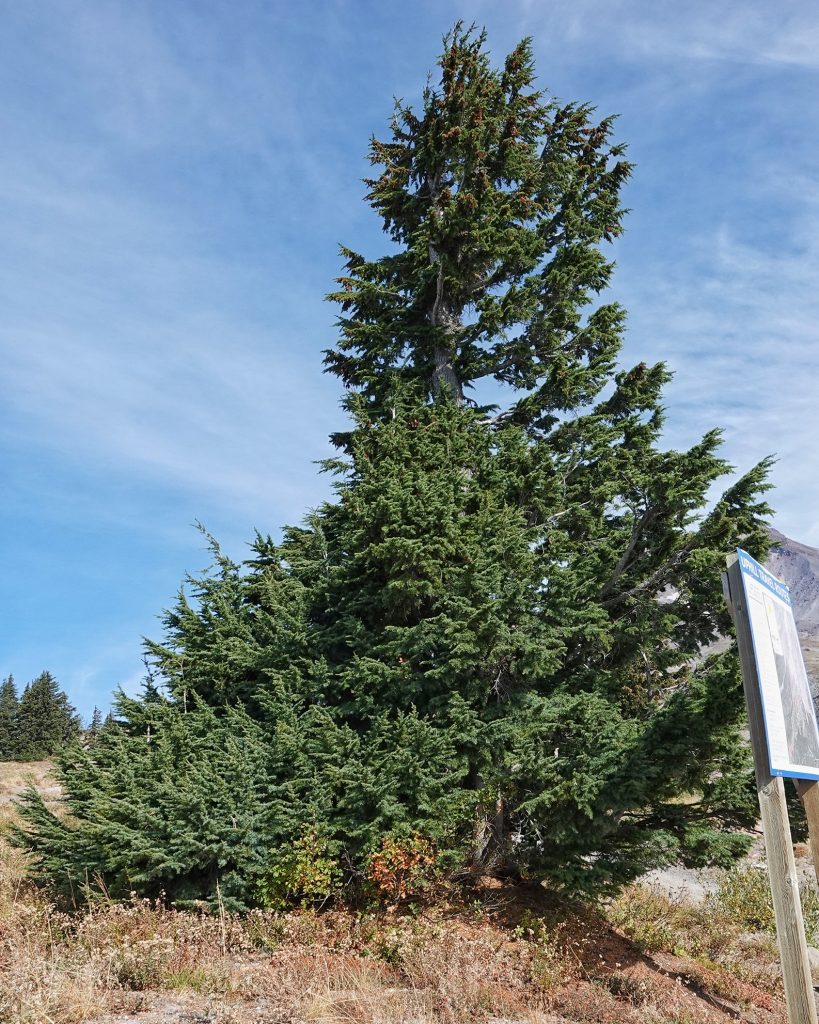
This is not a tree that is often targeted commercially, because the larger stands of it are usually in inaccessible places, but it is cut when encountered at lower elevations, and is marketed then as hem/fir. While there doesn’t appear to have been many food uses for this tree, indigenous peoples did apply chewed needles to burns, and sealed wounds with warmed pitch, which they also used to treat syphilis. A decoction of bark was used to treat colds, flu, and as an emetic, and warmed seeds were used to relieve the pain of toothaches. Boughs were used for bedding, as bathing brushes, and steamed as a room deodorizer, and the bark was used for tanning hides.
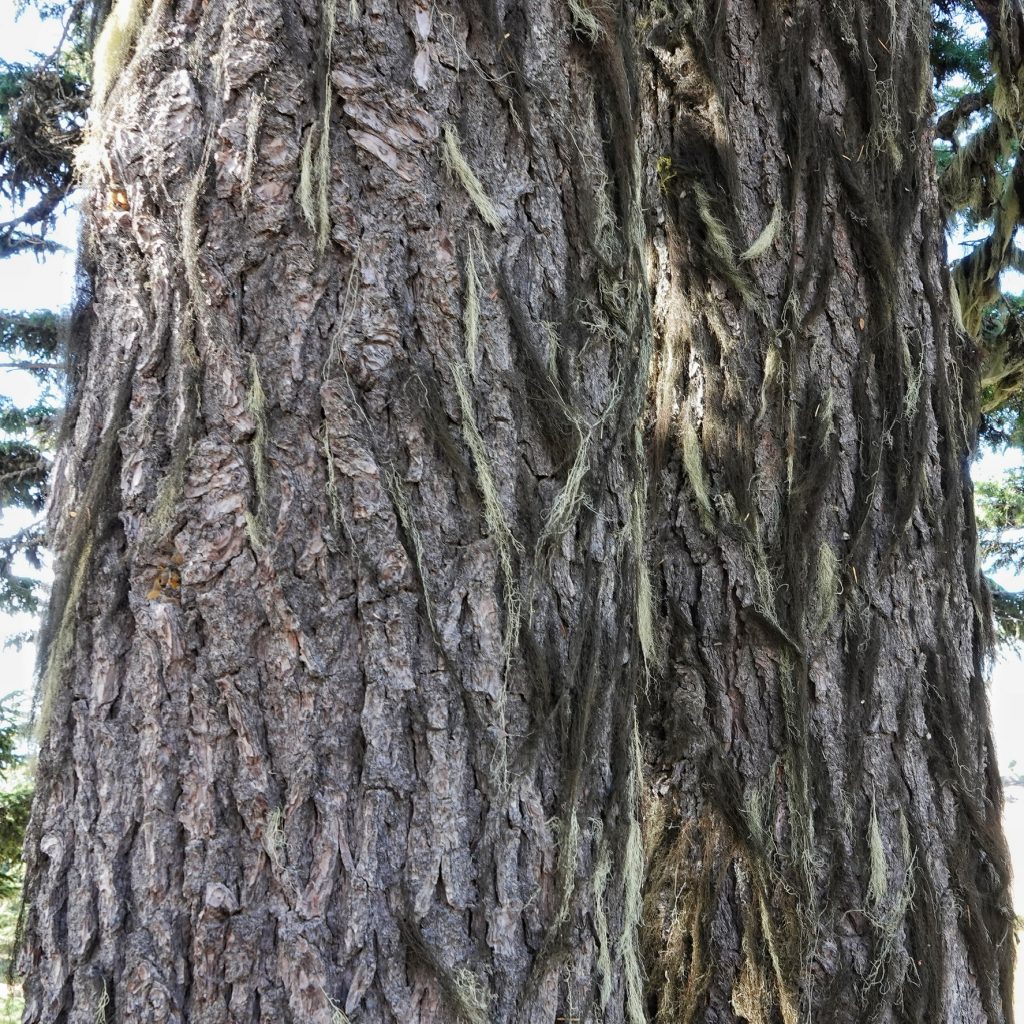
Description– Often large (up to 130’ tall- but at higher elevations may be dwarfed, gnarled, and shrubby) conifer with glaucous to green needles that are all the same size and are arrayed around the twig, and large (1.5-3”) cones without visible bracts; needles are pliable, 10-18mm long by 1-2mm wide, with faint stomatal bloom on both sides, and a rounded apex; leaf bases tiny but persistent, more of a roughening than a peg; bark dark grey to reddish brown, and furrowed.
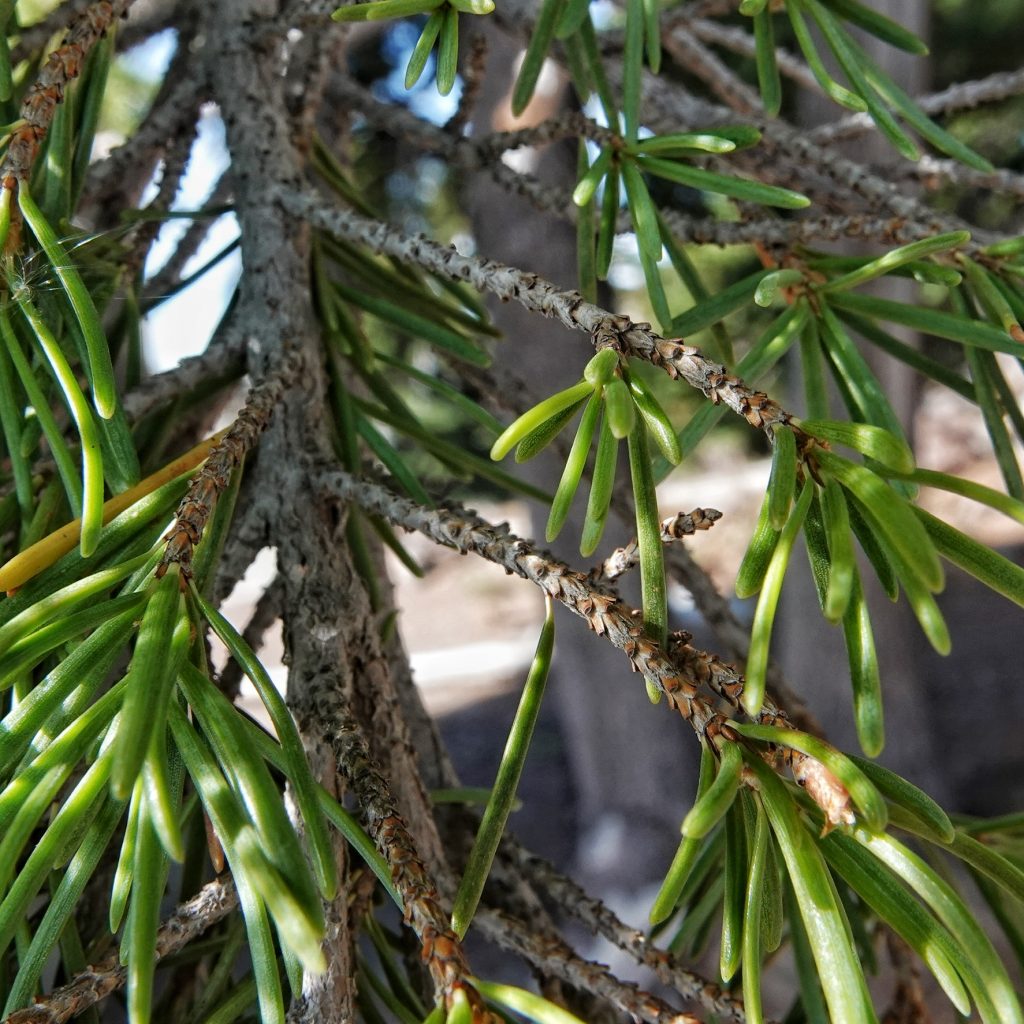
Similar species–Tsuga heterophylla has different sized needles which are yellow green to dark green and are not found on the bottom of the twig, and smaller cones; Pseudotsuga menziesii has longer, narrower, yellow green to dark green needles, and cones with visible bracts; true firs (Abies spp.) have circular and smooth or indented leaf scars; Picea spp. (spruce) have peg-like and persistent leaf bases, and stiff, pointed needles.
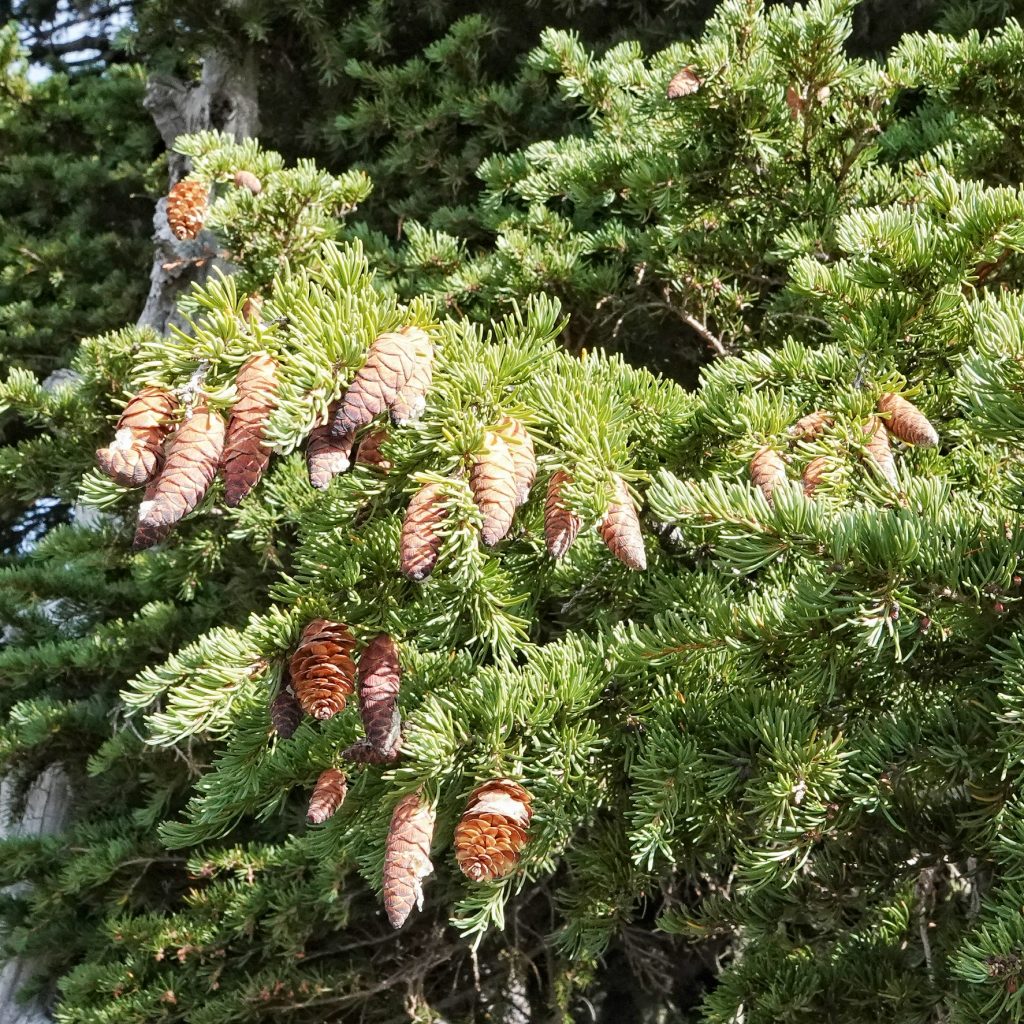
Habitat-Elevations above 3,000’, most common from 4,000’ to subalpine; oddly it’s preference for higher elevations with persistent winter snow may stem from it being intolerant of frozen ground, thus requiring the presence of snowpack as insulation from freezing temperatures.
Range-Western North America; region wide in appropriate habitat.
Reproductive timing-Cones form and are fertilized in spring/summer, mature in late summer/fall
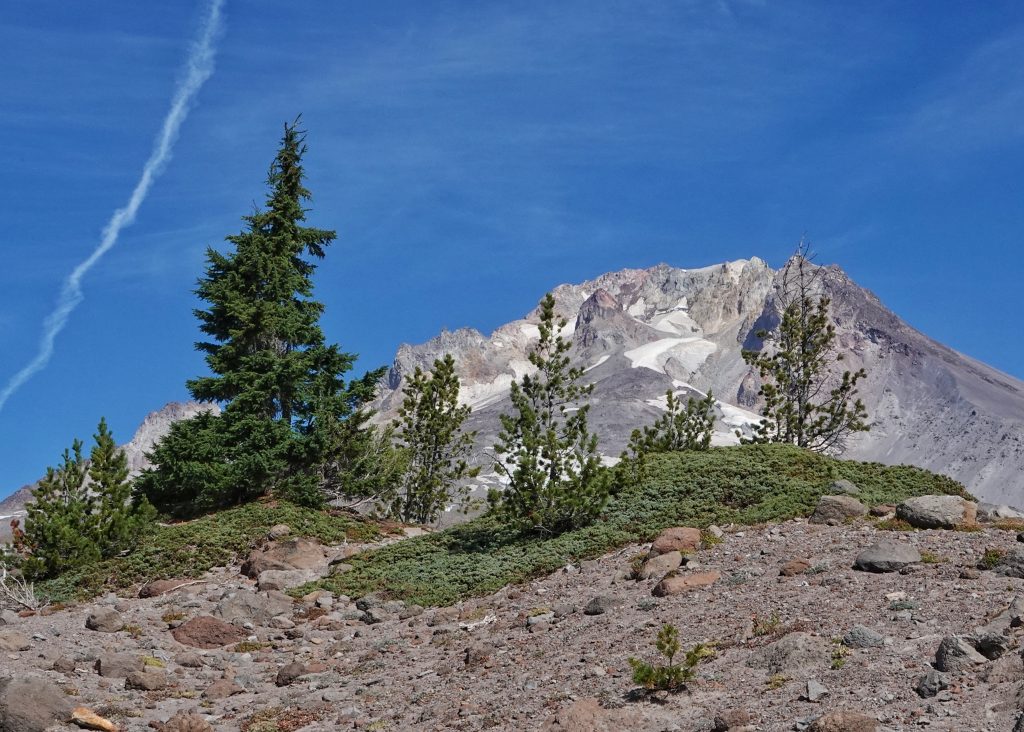
Eaten by-Like most conifers there are a variety of moths that use it as a larval host, including Lophocampa argentata, Enypia packardata, E. venata, Epirrita autumnata, E. pulchraria, Eupithecia annulata, E longipalpata, E. spermaphaga, Gabriola dyari, Hydriomena irata, H. speciosata, Melanolophia imitata, Neoalcis californiaria, Xestia mustelina, Apotomops wellingtoniana, Argyrotaenia dorsalana, and the leaf miners Epinotia tsugana and Feralia jocosa, as well as those in the genera Coleotechnites and Choristoneura; probably utilized by either adults, larvae, or both, of spittlebugs in the genus Aphrophora; the leaf beetle Syneta carinata; there are probably many other subalpine insects that feed on parts of this tree, but I cannot ascertain what they may be; grouse feed on the buds and needles, many birds consume the seeds, and squirrels and chipmunks stash the cones for future food; dead and dying trees are utilized as larval hosts for wood wasps in the genus Sirex, and the longhorn beetles Callidium antennatum hesperum, Etorofus obliteratus, Neanthophylax tenebrosus , Ortholeptura valida, and Pachyta armata.
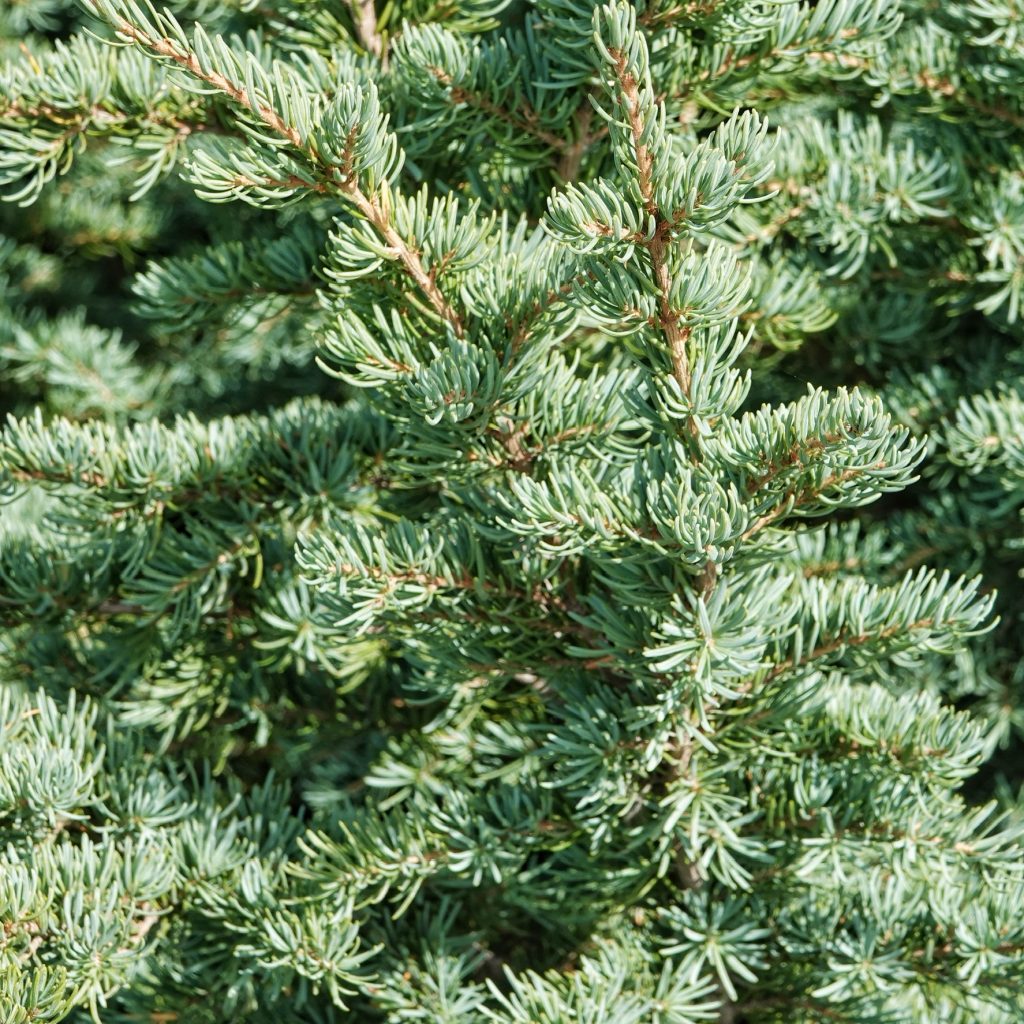
Etymology of names– Tsuga comes from Japanese words for ‘mother’ and ‘tree’, and is their name for hemlocks. The specific epithet mertensiana honors Karl H Mertens (1796-1830), a German Botanist and explorer who collected extensively in Alaska.
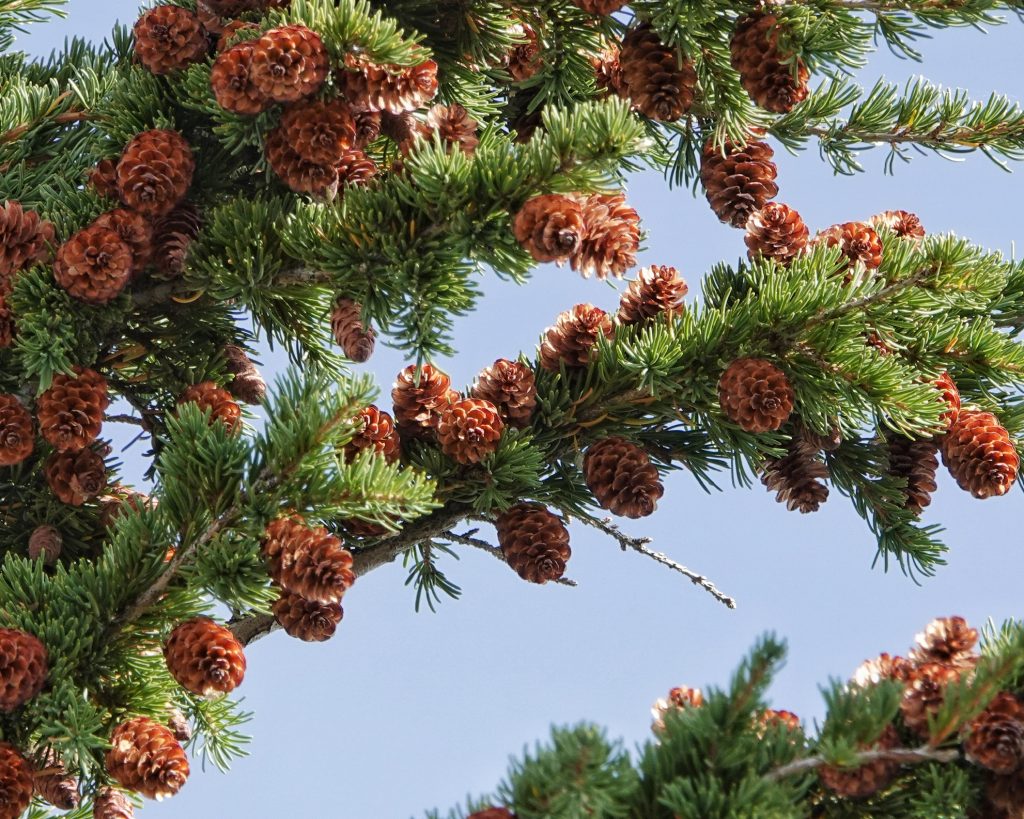
Tsuga mertensiana (mountain hemlock) description
Tsuga mertensiana | Landscape Plants | Oregon State University
BRIT – Native American Ethnobotany Database
Burke Herbarium Image Collection
https://en.wikipedia.org/wiki/Karl_Heinrich_Mertens
https://en.wikipedia.org/wiki/Black-body_radiation
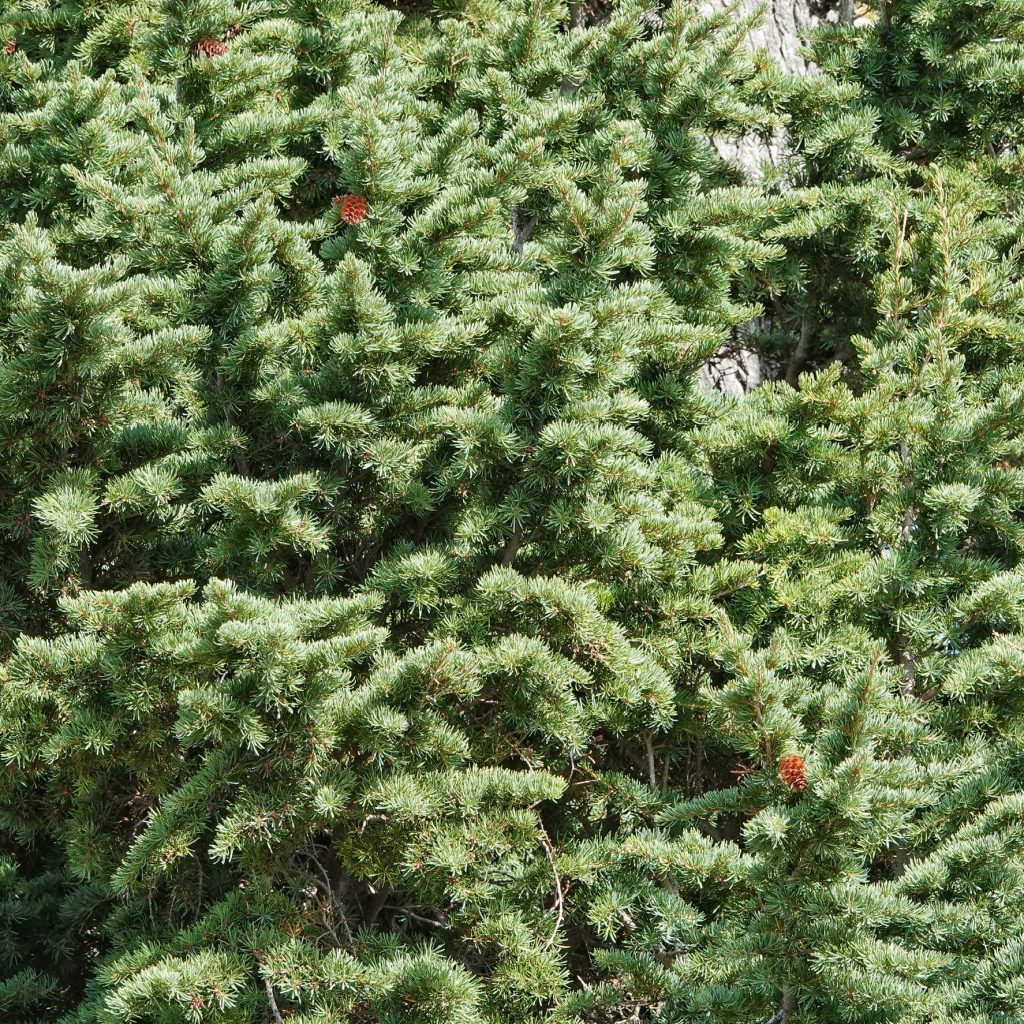
What a great website! Thanks for doing this. Mountain Hemlock is my favorite tree. I identify them by their needles which radiate from the stem. Great pictures.
Thanks for your appreciation, Merry!